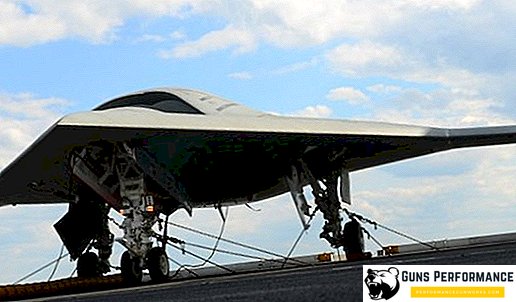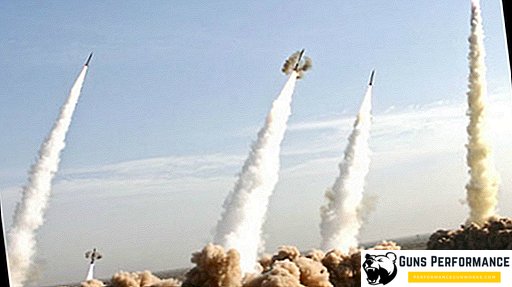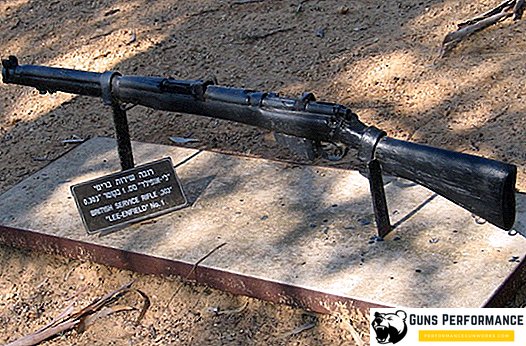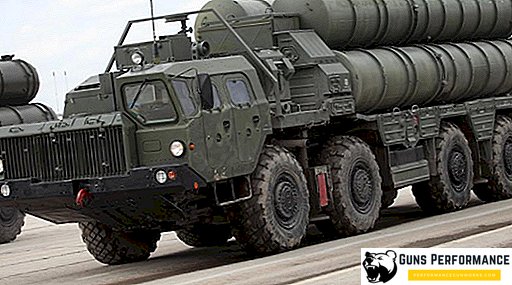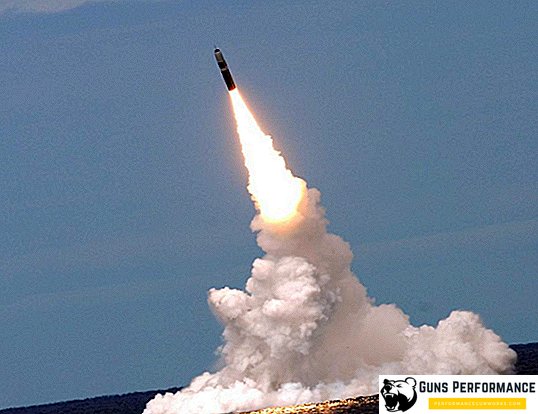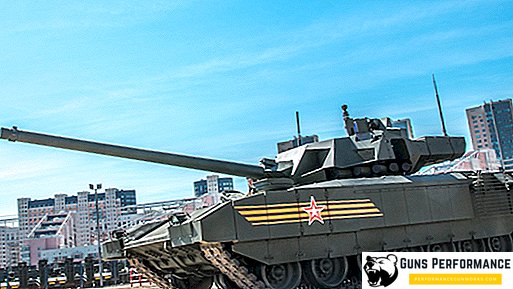Since the beginning of the 20th century, the South Atlantic Ocean has almost always been a calm region. He was touched only by sea battles of both world wars, but this lasted for a total of only about 9 years. The rest of the time, as a rule, calm reigned here, which was suddenly destroyed in 1982. It was then that events unfolded here, followed by the whole world. Here the troops of Great Britain and Argentina collided.
Prerequisites of the Falklands War
The Falkland Islands (or, as they are called in Argentina, the Malvinas), located in the southern part of the Atlantic Ocean, were first discovered by British sailors and then by the French, who founded the first settlement here. Subsequently, an English settlement was founded here. As a result, the islands were divided for decades between the British and Spaniards, who bought the rights to the islands from the French. But soon the story decreed that the Falkland Islands were British.
In 1816, the United Provinces of South America, later transformed into the state of Argentina, declared independence from Spain. The state, from the very beginning of its existence, considered the Falklands its territory. However, the affairs of the Argentines on the islands were not the best way, and in 1833, Great Britain regained its power over the Falklands. Thus, the actual domination of Argentina in the Falkland Islands lasted only 17 years. However, since then, Argentina considered and considers them part of its territory.
During the nineteenth and first half of the twentieth centuries, the situation around the Falkland Islands remained virtually unchanged. That all changed in the early 1980s ...
The 60s – 80s of the 20th century in Argentina cannot be called calm. This period was noted in the history of the country as a series of military coups, as a result of which various military groups came to power. In fact, this did not mean the strengthening of state power; on the contrary, these coups only disorganized the situation in the country, while the higher ranks were only interested in power, not in the welfare of the people.
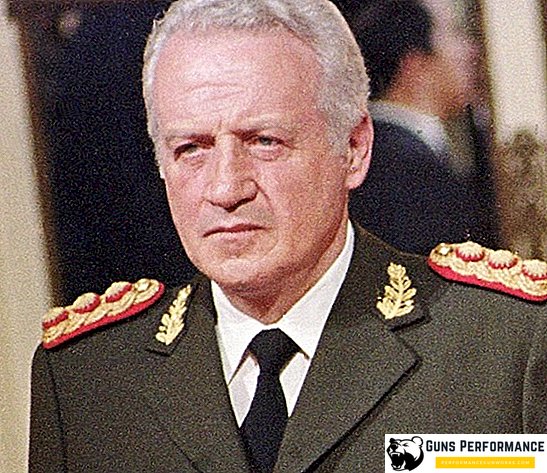
As a result of the military coup that took place in December 1981, Lieutenant General Leopoldo Galtieri came to power in Argentina. At this time, the crisis of power in the country reached its peak: the popularity of the new government and the head of state was very low. It was these circumstances that made the new elite of Argentina plan a "small victorious war" in order to strengthen their position.
The Falklands (Malvinas) Islands and the island of South Georgia, which belonged to Great Britain, seemed the most "easy" prey to the generals. And while the British garrison was very small on the Falklands, so it couldn’t be difficult to defeat it, there was practically no such thing as a garrison on South Georgia, an island without a permanent population. The remote location of the British bases also played its role, which to a certain extent prevented the supply of the British army during operations in the South Atlantic region.
Calculation of the Argentine leadership was done on the fact that the UK, experiencing difficulties in the South Atlantic, just will not get involved in fighting for the islands, and the situation will simply "settle down" with time. However, he was not taken into account, and this was the main mistake of L. Galtieri, the prestige of Great Britain, which would not allow its leadership to simply release the situation, especially when it came to the occupation of its territories.
The beginning of the Falklands War - Argentina seizes the islands

On March 19, 1982, Argentine vessels suddenly appeared near South Georgia Island, which is about 1,400 kilometers from the Falkland Islands. Argentine workers were brought here, who actually took over the seizure of the island, hoisting the flag of Argentina over it. Seeing the established Argentine flag, the British soldiers decided to intervene, but were disarmed by Argentine troops. South Georgia Island was captured by Argentina without bloodshed. After the bloodless and successful seizure of South Georgia, the Argentine leadership believed in its own impunity and began preparing and implementing the seizure of the Malvinas Islands themselves.

On April 2, 1982, Argentine military and landing ships showed up at Falkland. The landing was successful, and the few British garrison could not provide any significant resistance to the Argentine troops. After a short battle, the garrison capitulated and was immediately disarmed, and control of the Falkland Islands passed to Argentina.
However, the seizure of the islands did not become for Argentina the same “invisible” step as the seizure of South Georgia. Almost immediately, British warships and marine units were sent to the region. Their goal was to designate the military presence of Britain in the area of the islands, to block them and, if necessary, to come into contact with the enemy. The loss of the Falkland Islands would forever be a deadly blow to Britain for prestige and, in fact, deprivation of the status of a great power.
The day after the seizure of the islands, a meeting of the UN Security Council was convened, at which resolution No. 501 was adopted, condemning the Argentine invasion of Falkland. The Argentine side did not respond to the resolution.
Falkland conflict flares up - first encounters
On April 7, the British Secretary of Defense announced the blockade of the Falkland Islands during the operation to free them. The conditions of the blockade allowed the British fleet to sink absolutely any ships of Argentina. This measure was taken in order to paralyze the actions of the Argentine fleet in the Falkland area and the obstacles to the supply of Argentine troops.
As before, the supply of British troops was of great difficulty, since all British bases were at a great distance from the combat area. The United States came to the rescue - the American military base on Ascension Island was provided to the British. Now it was possible to begin the operation to liberate the Falkland Islands.
On April 25, British troops disembarked on South Georgia Island. The Argentine garrison practically did not put up any resistance and laid down their arms. Thus, control of the island returned to the British. However, the main battles were just ahead.
By May 1, 1982, the British fleet had already approached the Falkland Islands. In the morning of this day, British aviation bombed the capital of the Falkland Islands - Port Stanley. Also at the same time began the clash of two fleets - the British and Argentine. As a result of a sea battle on May 2, the Argentine cruiser "General Belgrano" was sunk. Realizing that the continuation of the sea battle could lead to the complete destruction of the fleet, the Argentine leadership decided to withdraw the fleet to the bases.
The withdrawal of the Argentine fleet created certain difficulties in supplying the garrison on the islands. Now the word was given to aviation. The Argentine side has made a bid to inflict heavy losses on the British, both in manpower and in ships. However, the combat capabilities of the Argentine aviation did not allow significant damage to the British fleet. There were several reasons for this, starting with the fact that most of Argentina’s aircraft were attack aircraft and fighter-bombers that were not designed to attack ships, ending with the fact that Argentina had conventional bombs, which were not designed even for throwing from small heights. Thus, as a result of air attacks, the British fleet lost only the destroyer Sheffield; also received damage to the aircraft carrier Invincible. These private successes of Argentina could not affect the overall, very unfavorable for her, course of action.
British landing and the return of control of the islands

In early May, after massive air battles, the conflict subsided. However, the blockade of the Falkland Islands by the British fleet continued. At the same time, the British side was actively preparing the landing on the islands in order to regain control and force the Argentine garrison to surrender. For this purpose, the 5th Infantry and the 3rd Marine Brigade, as well as a division of elite warriors - Gurkas were allocated.
The landing operation on the Falkland Islands began on May 21, 1982. Place for the landing was chosen settlement San Carlos, located on the opposite side of the island from Port Stanley. As a result of a short battle, the town was taken by the British. Despite the massive air strikes from Argentina, in the following days, British troops managed to expand and strengthen the bridgehead, and also to start moving to Goose Green, and another part of the forces across the island to Port Stanley.
Already on May 28, after the heavy fighting, the cities of Goose Green and Darwin were occupied, which made the position of the Argentine garrison almost hopeless. Almost all major settlements of the island, with the exception of Port Stanley, were in the hands of the British. Argentine aviation as a result of persistent attempts to forge British forces suffered huge losses. As a result, by June 4, Argentine troops on the Falklands were pushed aside to a small bridgehead in the west and were practically deprived of supplies. Here came the 3rd Marine Brigade and the 5th Infantry Brigade of Great Britain.

The decisive battle began on the night of June 12th. As a result of the fighting on June 12-14, the British managed to occupy all the heights dominating Port Stanley and subject the Argentine forces to shelling. Thus, the resistance of the latter has become meaningless. Having no supplies, ammunition and being under the demoralizing influence of artillery fire of the British troops, the Argentine garrison capitulated on 14 June.
June 20, British troops liberated the South Sandwich Islands, including South Georgia. The Falklands War is over.
Losses of the parties and the outcome of the Falkland War
The Falklands War was not concluded by the signing of any treaty, but by the actual end of hostilities. As a result of this conflict, the British side suffered losses of approximately 260 people killed, 7 ships of various sizes, 24 helicopters and 10 aircraft. The losses of Argentina in the Falklands War were estimated at about 650 people killed and about 11 thousand prisoners, 8 ships of various sizes and about 100 aircraft.
Anglo-Argentine conflict was a serious blow to the prestige of Argentina. Riots began in the country, as a result of which, on June 17, before the actual end of the war, L. Galtieri resigned as head of state. However, Argentina did not give up its claims to the Falkland Islands (Malvinas), and now also claims to them.
For Britain, the Falklands War was a new confirmation of the power of the country, whose influence after World War II was steadily falling. The Royal Navy has proved its power and ability to solve problems even far from bases, which also strengthened the prestige of the state.


